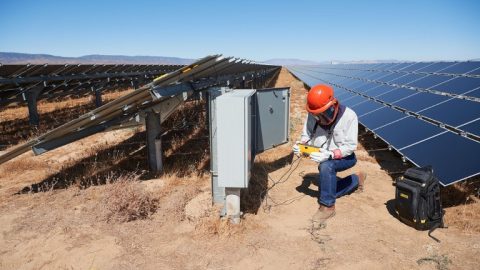In the business world, having a steady power supply is crucial. An Uninterruptible Power Supply (UPS) is essential when the power goes out, acting as a shield for critical systems. To ensure your UPS functions optimally every day, it’s important to follow a simple uninterruptible power supply maintenance checklist. Regular maintenance of UPS is vital to ensure uninterrupted energy generation and maximize the lifespan of critical components. One important aspect of solar power plant maintenance is the upkeep of UPS and batteries. Below is the comprehensive battery maintenance checklist and preventive maintenance checklist for UPS in a solar power plant.
Importance of UPS PM Checklist and Battery Maintenance
- UPs and batteries are the backbone of solar power plants as they provide essential backup power in case of grid failures or during periods of low sunlight.
- Effective preventive maintenance ensures reliable backup power and extends the lifespan of costly equipment.
UPS and Battery Maintenance Checklist
Visual Inspection and Contamination Checks:
The first and most important step is to check any signs of liquid contamination, severely affecting performance. Effectively check all batteries and capacitors for any signs of liquid contamination.
Electrical and Performance Checks:
Output Frequency:
The output frequency of the solar panel should match the standard frequency of the power grid it is connected to. The standard frequency of the grid is 50 HZ or 60 HZ, depending on the country. If the output frequency value deviates from this value, it will indicate an issue with the UPS battery or grid connections.
For calculating frequency deviation, we can use the below-mentioned formula.

Where: measured frequency is the actual output frequency measured from the UPs.
Visual Inspection of Grounding:
Ensure that the grounding connections are intact and free from corrosion. Proper grounding is necessary for equipment protection and safety.
Check Voltage and Current Readings:
Use a multimeter or power quality analyzer; below are the details of measuring input-output voltages and currents.
- Set a multimeter to measure AC voltages.
- Connect the positive (red) probe to the voltage source and the negative probe (black) to the common or ground terminal.
- Now, record the voltage readings. For input voltage, measure at the ups systems input terminals; for output voltage, measure at the output terminal.
The same will be the procedure for current measurements.
Power Calculations:
Once you have voltage and current readings, you can calculate power using the following formulas:
1. Apparent Power (VA):
Apparent Power (VA) = Voltage (V) x Current (A)
2. Real Power (W):
Real Power (W) = Voltage (V) x Current (A) x Power Factor (PF)
3. Power Factor (PF):
Power Factor (PF) = Real Power (W) / Apparent Power (VA)
4. Reactive Power (VAR):
Reactive Power (VAR) = √((Apparent Power (VA))^2 – (Real Power (W))^2)
5. Power Factor Angle (θ):
Power Factor Angle (θ) = arccos (Power Factor (PF))
Cleaning and Load Testing:
Regularly clean the UPS equipment enclosures to remove any dust or debris. Dust accumulation can lead to overheating and decreased efficiency. This step is an essential part of the UPS maintenance checklist and should be included in your UPS preventive maintenance checklist.
Off-line Load Test:
- Conduct offline load tests to ensure the UPs work well under load conditions.
Electronics and Alarms Inspection:
Two things need to be checked here:
- Examining electronic components for signs of wear or damage, repair or replace the damaged equipment.
- Regularly check systems alarms and LED’s for any error coding or warnings.
Battery Maintenance
Visual Inspections of Battery:
Visual inspection of the battery includes checking for any signs of leakage. If there is any leakage, then replace the battery.
Voltage Measurements:
Only record the deviation in values of voltage measurements.
- ICCS and cable connections:
- Vent cap cleaning :
- Corrosion checks:
Load Calculations:

Where:
Real power: actual power being consumed by connected devices and provided by UPs.
UPs rated power: maximum capacity of UPs system.
If the load percentage is, for example, 50 %, then it means that the current devices currently use 50 % of the UPS system-rated capacity.
Conclusion:
Regular preventive maintenance of UPS systems and batteries is crucial to ensure the reliability and longevity of solar power plants. Including battery maintenance and load calculations in your UPS maintenance checklist can provide insights into design time considerations and deviations of values over the years. A comprehensive battery maintenance checklist alongside the UPS maintenance checklist ensures optimal performance and extended lifespan of the systems.
Download the sample file of UPS & Battery Preventive Maintenance Checklist

































